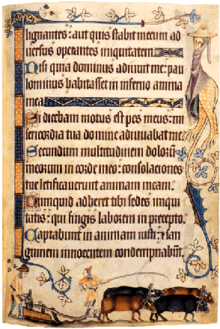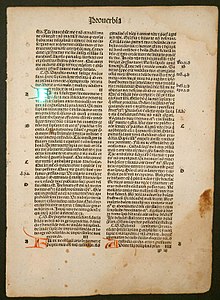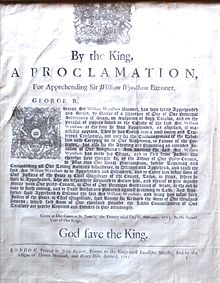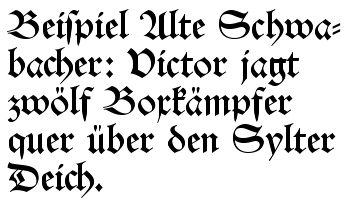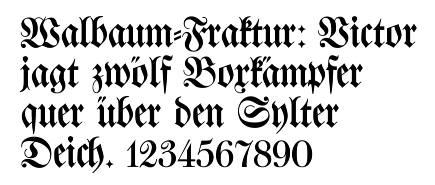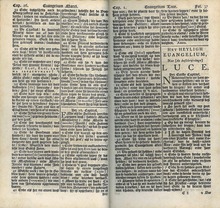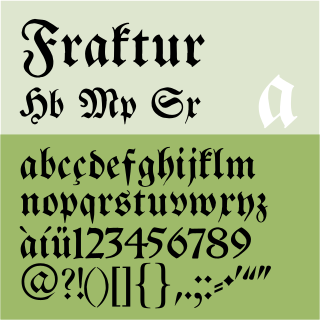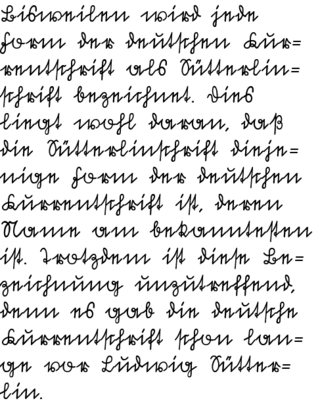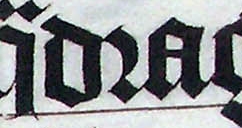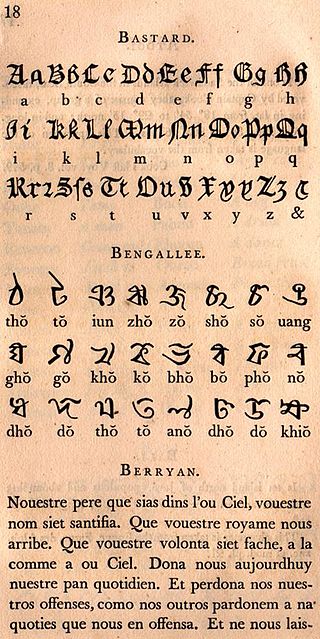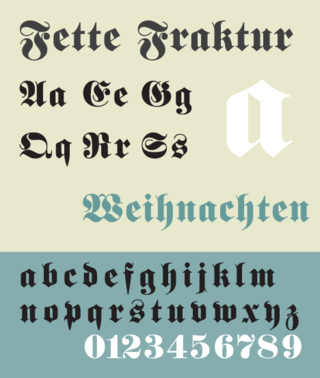| Latin script, Blackletter hand | |
|---|---|
 | |
| Script type | Alphabet |
Time period | 12th–17th century |
| Direction | Left-to-right |
| Languages | Western and Northern European languages |
| Related scripts | |
Parent systems | Latin script
|
Child systems | Fraktur (Fraktur and blackletter are sometimes used interchangeably), Kurrentschrift including Sütterlin |
| ISO 15924 | |
| ISO 15924 | Latf(217),Latin (Fraktur variant) |
| Unicode | |
1D504–1D537, with some exceptions (see below) | |
Blackletter (sometimes black letter or black-letter), also known as Gothic script, Gothic minuscule or Gothic type, was a script used throughout Western Europe from approximately 1150 until the 17th century. [1] It continued to be commonly used for Danish, Norwegian, and Swedish until the 1870s, [2] Finnish until the turn of the 20th century, [3] Latvian until the 1930s, [4] and for the German language until the 1940s, when Hitler officially discontinued it in 1941. [5] Fraktur is a notable script of this type, and sometimes the entire group of blackletter faces is referred to as Fraktur. Blackletter is sometimes referred to as Old English, but it is not to be confused with the Old English language, which predates blackletter by many centuries and was written in the insular script or in Futhorc. Along with Italic type and Roman type, blackletter served as one of the major typefaces in the history of Western typography.
